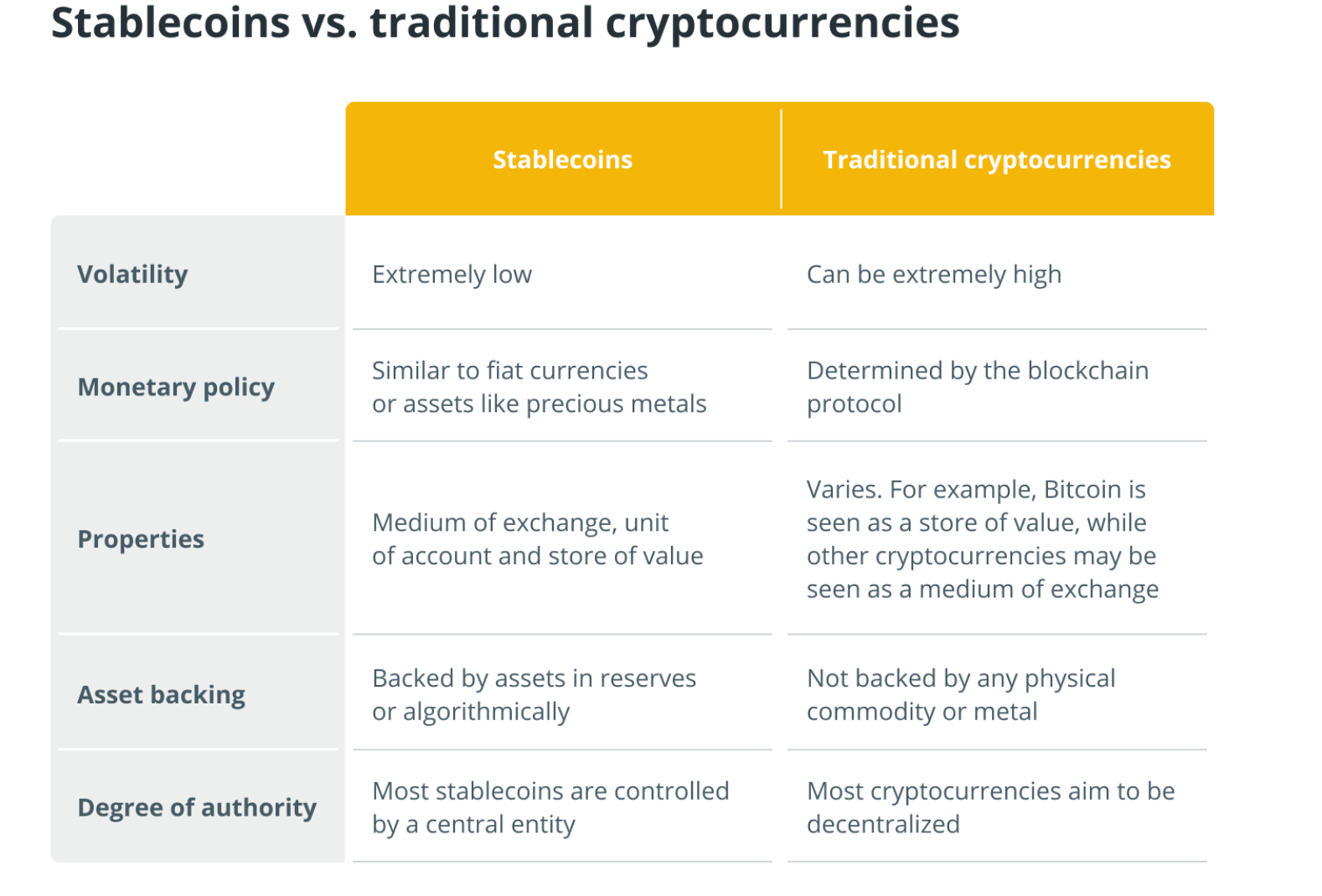Stablecoins in B2B Payments: Transforming Transactions for a Digital Future

Imagine this: you’re a business owner expanding internationally, but every time you invoice or pay, you’re waiting days, sometimes weeks, for funds to clear. Time zones and banking hours don’t align, and by the time the payment hits, costs have shifted, and revenue has dwindled. Stablecoins offer a way to sidestep these hurdles.
With stablecoins, payments are instant, reliable, and free from fluctuating fees. By pegging their value to a stable asset, they let your business move at the speed of opportunity, not bureaucracy.
A stablecoin is a type of cryptocurrency, but unlike Bitcoin or Ethereum, it’s pegged to something stable, like the U.S. dollar or euro. So, for example, one U.S. dollar in a bank account can be represented by one “digital dollar” as a stablecoin.
The point of pegging it to something stable is to keep the value predictable, which makes it different from other cryptos that can swing wildly in price.

Why does this matter? Stablecoins enable near-instant money transfers between parties, often at a fraction of the usual fees, thanks to blockchain technology. This technology underpins stablecoins by providing a decentralized, secure, and transparent ledger for transactions. Each transaction is recorded on a blockchain, which is a distributed database maintained by a network of computers (nodes). This eliminates the need for intermediaries, significantly reducing transaction times and costs.
Additionally, blockchain’s inherent security features protect against fraud and ensure the integrity of transactions.
Unlike traditional bank transfers, which might require multiple intermediaries, stablecoin transactions can be as simple as sending a message.
This potential compelled Stripe, a major payments infrastructure player, to acquire Bridge, a company focused on stablecoins.
Stripe and other major payment giants are recognizing the viability of stablecoins as a practical solution to simplify global payments.

How Stablecoins Could Change B2B Payments
Let's dive deeper into the implications of stablecoins in B2B payments:
- Faster Cross-Border Payments
Today, making an international payment can be a long and costly process. Banks have to pass the money along through a series of middlemen (correspondent banks) each of which takes a cut. Stablecoins remove the need for these intermediaries.
With them, a payment from the U.S. to Europe could happen nearly instantly, with fees that are significantly lower. This would mean businesses could manage their international cash flow better, greater predictability and fewer headaches. - Lower Transaction Costs
In traditional banking, fees can quickly add up, especially for international payments. Stablecoins offer an alternative that doesn’t require these middlemen, so costs go down.
Stripe’s acquisition of Bridge likely points to them exploring ways to cut down on costs across their own payment networks. - Better Cash Flow for Businesses
Stablecoins can significantly benefit businesses in regions with limited access to traditional banking. With internet access, these businesses can participate in global markets, receiving payments without the high fees and delays associated with traditional banks.
If Stripe integrates stablecoin options, businesses in developing countries could seamlessly receive payments from clients in the U.S. or Europe. - Improved Financial Inclusion
Stablecoins could also mean a lot for businesses in regions with less access to traditional banking. Since stablecoins can be used by anyone with internet access, they make payments possible for businesses that might otherwise be excluded from global markets.
If Stripe were to integrate stablecoin options across their platform, a business in a developing country could get paid by clients in the U.S. or Europe without going through a bank that might charge high fees or take several days to process the payment.
Imagine a small business in Kenya that produces handmade bags and sells them online. This business has customers in the U.S. and Europe who love their unique products. However, the business faces significant challenges with traditional banking systems:
High Transaction Fees: International bank transfers come with high fees, which eat into their profits.
Slow Processing Times: Payments can take several days to clear, causing cash flow issues.
Limited Access to Banking: The business owner has limited access to traditional banking services, making it difficult to manage international transactions efficiently.
Solution: Integration of Stablecoins in mainstream payment infrastructure
This small business could leverage stablecoins for their transactions. Here’s how it would work:
Instant Payments: The business can receive payments from customers in the U.S. and Europe almost instantly. Stablecoins like USDC (USD Coin) are pegged to the U.S. dollar, ensuring the value remains stable.
Lower Fees: Transaction fees are significantly lower compared to traditional bank transfers. This means the business retains more of its revenue.
Accessibility: With just a smartphone and internet access, the business can manage its finances without relying on traditional banks.
Potential Implications:
Improved Cash Flow: Faster payments mean the business can manage its cash flow more effectively. This allows them to reinvest in their operations, purchase materials, and pay employees on time.
Global Market Access: By reducing the barriers to international transactions, the business can expand its customer base globally, increasing sales and revenue.
Financial Inclusion: Stablecoins provide a pathway to financial services for businesses in regions with limited banking infrastructure. This promotes economic growth and stability.
Reduced Risk from Currency Fluctuations
Businesses in regions with volatile currencies can benefit from the stability offered by stablecoins. These digital assets allow for sending and receiving.
payments without the risk of value fluctuations during the transaction process. This stability aids in better financial planning and reduces the risk of cash devaluation.
Final Thoughts on Stablecoins and B2B Cross-Border Payments
For businesses, these benefits are exciting because they could transform payment processes that have, for years, been slow and expensive. Stablecoins could potentially offer a faster, cheaper, and more accessible way to conduct cross-border transactions and manage payments. It could mean moving beyond the limitations of traditional banks and giving businesses more control over their funds.
For Stripe, the Bridge acquisition could lead to a new way of enabling B2B payments where businesses can transfer funds instantly with stablecoins. Stripe’s choice to go this route is likely a move to stay competitive in a space where businesses demand faster, smoother payment experiences.
If they succeed in making stablecoin payments mainstream, it could push other companies to follow suit, and we might see a significant shift in how businesses handle their payments worldwide.
At the end of the day, stablecoins represent a tool—a digital way to bridge gaps in the current payment infrastructure. It’s not a complete overhaul of our financial system, but it’s a step toward a more connected and efficient way of doing business.
Enabling Better Business Payments Experiences
Stripe's acquisition of Bridge underscores the importance of creating better and more convenient B2B payment experiences. The message is clear—Global commerce is only going to grow and businesses are increasingly demanding simpler, more efficient cross-border transactions.
By focusing on digital transformation, robust infrastructure, enhanced user experiences, and collaborative innovation, financial institutions and fintechs can streamline global payments, reduce costs, and improve financial inclusion.
Work with WDIR to make UX your unfair advantage in the digital era of B2B payments!
